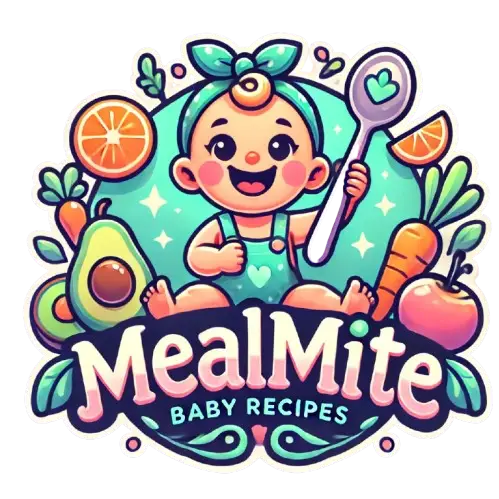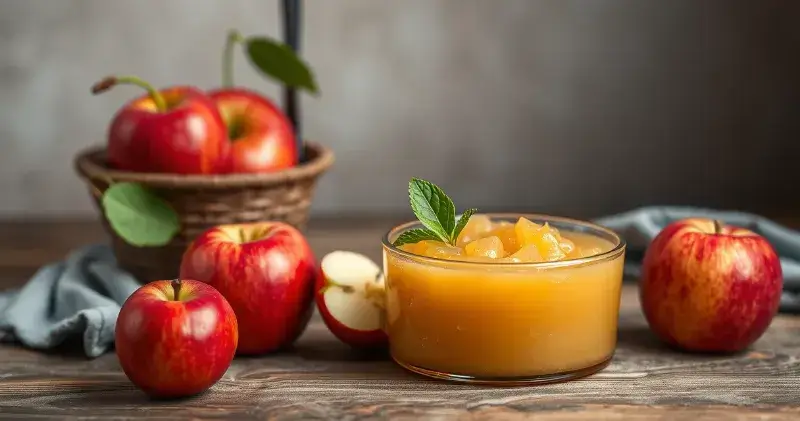Table of Contents
How to Make Applesauce for A Baby? This guide shows you how to make healthy, sugar-free applesauce. You’ll learn how to prepare it and find natural sweeteners. This way, your baby gets the best nutrition and taste.
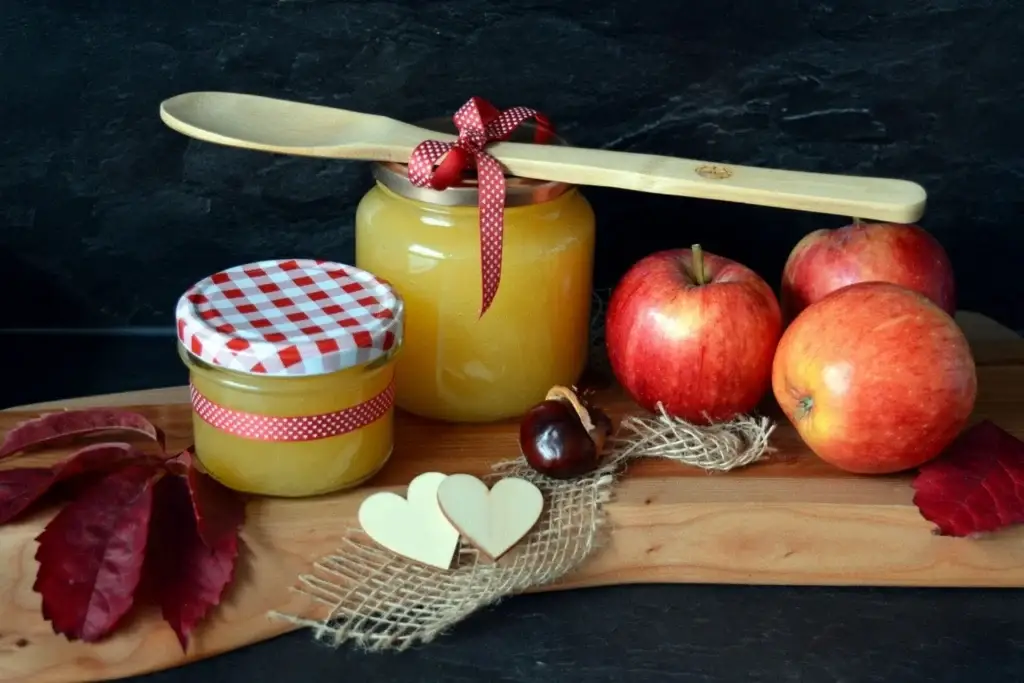
Key Takeaways
- Homemade applesauce is a nutritious and versatile first food for babies
- Sugar-free applesauce provides essential vitamins and minerals for your baby’s growth
- Proper selection and preparation of apples ensures a smooth, flavorful puree
- Natural sweetening options can enhance the taste without added sugars
- Proper storage and safety guidelines are crucial for making baby food at home
Benefits of Homemade Applesauce for Your Baby’s Development
Homemade applesauce is a great choice for your baby’s diet. It’s made with love and packed with nutrients. This simple fruit puree supports your baby’s growth and development.
Nutritional Value and Essential Vitamins
Apples are full of vitamins and minerals important for baby nutrition and health. Homemade applesauce keeps these apple nutrients intact. It gives your baby vitamins A, C, and B6, fiber, potassium, and antioxidants.
Digestive Health Benefits
The fiber in applesauce helps your baby’s digestive system. It can prevent constipation and diarrhea. This keeps your little one happy and healthy.
Brain Development Support
Nutrients in apples, like vitamin C and antioxidants, boost brain function. Adding homemade applesauce to your baby’s diet supports brain growth.
Choosing homemade applesauce over store-bought means your baby gets the best. It’s made just for their nutritional needs.
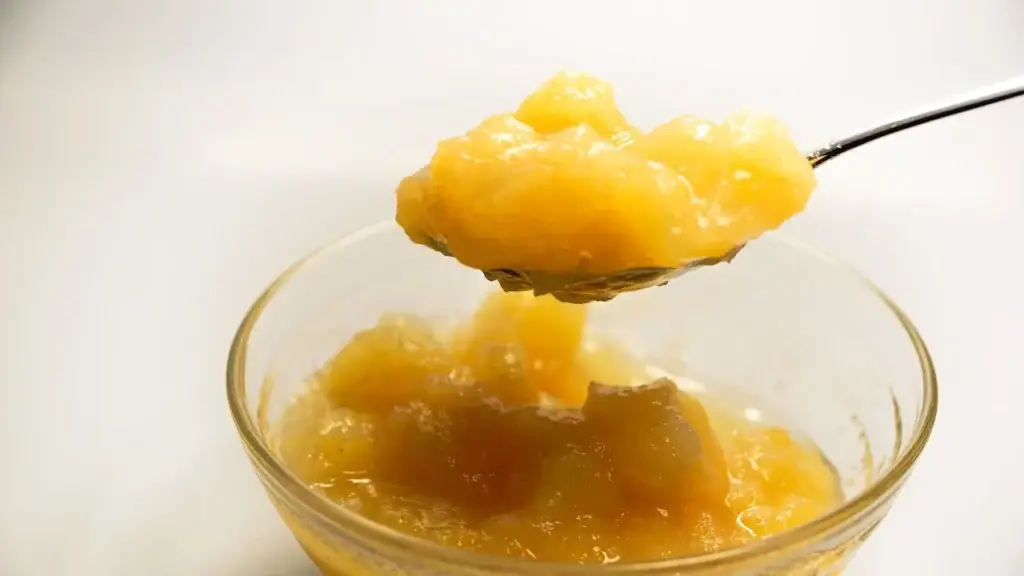
When Can Babies Start Eating Applesauce
Introducing solids and first foods is a big step in your baby’s growth. Applesauce is a favorite for many new eaters. But when can you start giving it to your baby?
Pediatric guidelines say babies can try applesauce around 4-6 months. They look for signs like sitting up well and showing interest in food, which indicate they’re ready for solids.
Remember, every baby is different. Always check with your pediatrician before starting solids. They can give advice based on your baby’s unique needs.
Signs Your Baby is Ready for Applesauce
- Sits upright and holds head steady
- Shows interest in foods you’re eating
- Can move food from the front to the back of the tongue
- Doubles birth weight and is at least 4 months old
When your baby is ready, start with a small amount of applesauce. Watch how they react. As they get used to it, you can give more. Soon, they’ll love this tasty first food!

“Introducing solids is an exciting milestone, but it’s important to follow your pediatrician’s guidance and watch for signs of readiness. Applesauce can be a great first food, but every baby is different.”
Selecting the Best Apples for Baby’s Applesauce
Choosing the right apples is key to making great homemade applesauce for your baby. You’ll want to choose between organic and conventional apples. Also, it’s important to pick the best varieties for a smooth, tasty sauce.
Organic vs. Conventional Apples
Many parents wonder about organic versus conventional apples for their baby’s applesauce. Organic apples are pricier but free from harmful pesticides. This makes them a safer choice for your baby’s sensitive stomach. Conventional apples might have some pesticide residue, which some parents try to avoid.
Best Apple Varieties for Sauce
- Gala – A sweet, crisp variety that cooks down to a smooth, creamy texture.
- Fuji – Known for its balanced sweetness and acidity, Fuji apples make a flavorful, aromatic applesauce.
- Honeycrisp – This juicy, crunchy apple variety retains its flavor well during the cooking process.
- Golden Delicious – A classic choice for applesauce, with a mild, sweet flavor and soft, smooth consistency.
Seasonal Buying Guide
Choosing apples at the right time is crucial. In the fall, you’ll find more varieties ripe and full of flavor. For winter and spring, pick storage apples like Gala or Fuji that stay fresh longer.
By picking the right organic or conventional apples, and choosing the best varieties and seasons, you can make your baby’s applesauce both healthy and tasty.
Essential Kitchen Tools and Equipment Needed
Making homemade applesauce for your baby is easier with the right tools. You’ll need everything from simple tools to advanced appliances. This will help you make delicious, nutritious applesauce in your kitchen.
Manual Tools for Applesauce Preparation
- A sharp paring knife or apple peeler for easily removing apple skins
- A sturdy cutting board for safely slicing and dicing the apples
- A potato masher or fork for manually mashing cooked apples into a smooth texture
- A mesh strainer or sieve for sifting out any apple peels or chunks
Power Appliances for Efficient Applesauce Making
For a quicker process, several appliances can help:
- Baby food maker – It steams, blends, and purees apples into perfect applesauce.
- Food processor – Its blades chop, mince, and purée apples quickly.
- Steamer – It cooks apples gently, keeping nutrients and making them smooth.
| Tool/Appliance | Benefits | Considerations |
|---|---|---|
| Baby Food Maker | Streamlined applesauce preparation, smooth texture | Retains nutrients, and creates a creamy texture |
| Food Processor | Versatile for various food prep, can handle larger batches | May require additional steps to achieve desired consistency |
| Steamer | Retains nutrients, creates a creamy texture | Requires manual mashing or blending after cooking |
Choosing the right tools is key. You want something efficient, safe, and easy to use. This way, making homemade applesauce will be a fun experience for you and your baby.
How to Make Applesauce for A Baby: Step-by-Step Guide
Making homemade applesauce for your baby is simple. Just follow a few easy steps. This way, your baby gets a tasty, safe food that helps them grow.
Preparation and Cleaning
How to Make Applesauce for A Baby?
First, pick the best apples for your baby’s applesauce. Wash them well to get rid of dirt. Then, peel, core, and cut the apples into small pieces. This makes cooking easier and keeps your baby’s food safe.
Cooking Methods
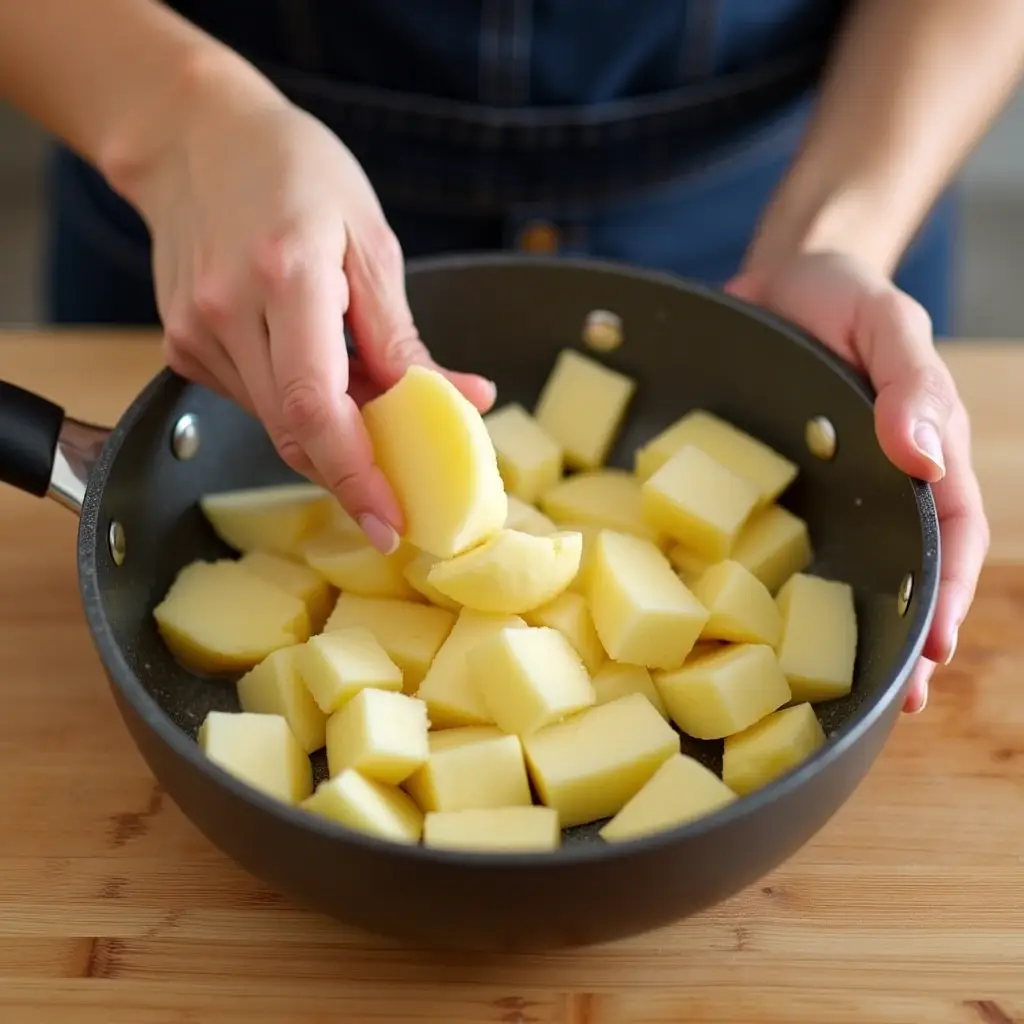
- Stovetop Cooking: Put the apple slices in a saucepan with a little water. Boil, then simmer until the apples are soft, about 10-15 minutes. Mash or blend them to the right consistency.
- Slow Cooker: Put the apple slices in a slow cooker with a splash of water. Cook on low for 4-6 hours. Then, mash or blend them to your liking.
- Instant Pot: Put the apple slices in your Instant Pot with a bit of water. Cook on high pressure for 5-7 minutes. Quick release, then mash or blend.
Storage Tips
After your applesauce is ready, let it cool. Then, put it in airtight containers or ice cube trays. Store it in the fridge for up to 5 days or freeze for up to 6 months. This way, you can enjoy baby food recipes and homemade applesauce whenever you want.
Remember, food safety is key when making baby food. Always wash your hands, utensils, and surfaces well. Store the applesauce right to avoid bacterial growth. With these steps, you can give your baby a healthy, tasty, and easy homemade applesauce treat.
Safety Tips and Precautions When Making Baby Food
When making homemade baby food, keeping it safe is key. This means keeping everything clean and watching out for allergens. Follow these tips to make meals that are both healthy and safe for your baby.
Prioritize Food Hygiene
- Wash your hands well with soap and warm water before starting.
- Clean all surfaces, utensils, and containers that will touch the baby food.
- Only use clean, safe containers to store the baby food.
Allergen Awareness
Be careful with allergens when picking and preparing ingredients for your baby’s applesauce.
- Talk to your pediatrician about any food allergies in your family.
- Try new ingredients one at a time to watch for reactions.
- Stay away from foods that can cause allergies, like nuts, eggs, or dairy.
Proper Handling of Ingredients
To keep your baby’s applesauce safe and good, follow these steps:
- Choose only fresh, good-quality apples without bruises or cuts.
- Wash and peel the apples well, removing stems and seeds.
- Cook the apples until they’re soft and easy for your baby to eat.
| Food Hygiene Practices | Allergen Considerations | Ingredient Handling |
|---|---|---|
| Handwashing Sanitizing surfaces and equipment Using clean storage containers | Consult with a pediatrician Introduce ingredients one at a time Avoid known allergens | Use fresh, high-quality apples Thoroughly wash and peel apples Cook apples until soft |
By sticking to these safety tips, you can make sure your homemade applesauce is healthy and safe for your baby. It will be free from any food hygiene or allergen worries.
Natural Sweetening Options Without Added Sugar
When making applesauce for your baby, you can choose healthier sweeteners instead of added sugars. Many natural options make the applesauce taste great and are good for your baby’s growth.
Fruit Combinations
Mixing different fruits with apples can make the applesauce sweeter and more flavorful. Try adding:
- Ripe bananas
- Pears
- Peaches
- Mango
- Berries (such as strawberries, blueberries, or raspberries)
These fruit blends not only taste good but also add important nutrients. They make sugar-free baby food even better for your baby.
Spice Addition Guidelines
Adding a bit of spice can also make the applesauce taste great without extra-natural sweeteners. Safe spices for babies include:
- Cinnamon: It’s warm and comforting, perfect with apples
- Nutmeg: It adds a subtle, woodsy flavor
- Vanilla extract: It enhances the fruit’s natural sweetness
- Ginger: It gives a gentle, soothing taste
Use these spices carefully, as a little is enough to please your baby’s taste buds.
You can make yummy and healthy applesauce for your baby by trying these natural sweeteners. No need for added sugars.
| Fruit Combination | Flavor Profile | Nutritional Benefits |
|---|---|---|
| Apple + Banana | Creamy, naturally sweet | High in fiber, potassium, and vitamin B6 |
| Apple + Pear | Subtly sweet, with a smooth texture | Rich in vitamin C, copper, and vitamin K |
| Apple + Mango | Tropical, sweet, and tangy | Abundant in vitamin A, vitamin C, and folate |
| Apple + Berries | Vibrant, tart, and refreshing | High in antioxidants, fiber, and vitamin C |
Storage Solutions and Shelf Life
Keeping your homemade applesauce fresh is crucial. It helps keep the nutrients and taste good. Here’s how to store it properly in the fridge and freezer.
For a few days, put the applesauce in an airtight container in the fridge. This way, you can make batches ahead of time, and it’s easy to grab when you need it. Use glass jars or BPA-free containers to keep it fresh and prevent bad tastes.
To store it longer, freezing applesauce is a great choice. Put it in portions in freezer-safe containers or ice cube trays. Store it in the freezer for up to 3 months. This makes meal prep simple, as you can thaw just what you need. Don’t forget to label the containers with the date so you use the oldest first.
FAQ
What are the benefits of homemade applesauce for my baby’s development?
Homemade applesauce is great for your baby’s growth. It’s full of nutrients, good for their stomach, and might help their brain grow. Making it at home means your baby gets important vitamins, minerals, and fiber for their health.
When can I start introducing applesauce to my baby’s diet?
You can start applesauce at 4 to 6 months when your baby is ready. They should be able to sit up, have good head control, and want to try solid foods. Always check with your pediatrician before starting solid foods, like applesauce.
How do I select the best apples for making homemade applesauce?
Choose organic apples for a cleaner option. Gala, Fuji, and Honeycrisp are sweet and work well. Pick apples in season for the best taste and freshness.
What kitchen tools and equipment do I need to make homemade applesauce?
You’ll need a food processor, blender, or immersion blender, and a pot or steamer. Also, get storage containers for the applesauce. You might also want a baby food maker or food mill for easier making.
How do I make applesauce for my baby step-by-step?
Here’s how to make applesauce for your baby: 1. Peel, core, and chop the apples. 2. Cook them until soft. 3. Blend or mash to a smooth texture. 4. Store in airtight containers in the fridge or freezer.
What safety precautions should I take when making baby food at home?
Keep food safety in mind. Clean and sanitize everything, wash your hands, and watch for allergens. Also, make sure to cook and store at the right temperatures to avoid bacteria.
How can I naturally sweeten applesauce without adding sugar?
Use natural sweeteners like fruit combinations or a little cinnamon or vanilla. These add sweetness and extra nutrients without sugar.
How long can I store homemade applesauce, and what are the best storage solutions?
Homemade applesauce lasts 3-5 days in the fridge or 6-8 months in the freezer. Use airtight containers or ice cube trays for freezing. This way, you can thaw only what you need, keeping the food fresh and nutritious.
